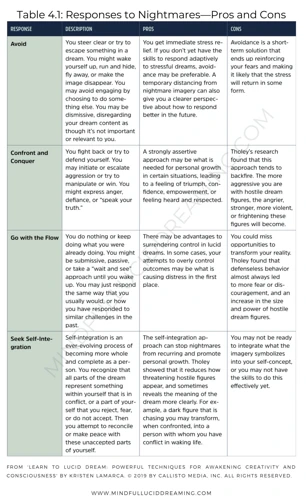The Science of Sleep and Dreams

As we close our eyes and drift into slumber, our minds enter a mysterious world of dreams. Our brain waves and physiological processes shift, taking us through several stages of sleep. Though we may not always remember them, dreams can leave us with lingering emotions and thoughts. But what causes us to dream, and what do these nighttime visions reveal about our minds? Throughout history, dreams have been shrouded in mystery and superstition, but now modern science is beginning to unlock the secrets behind the science of sleep and dreams.
Sleep Stages and Dreaming
When we sleep, we go through several stages of sleep. These stages are characterized by different brain wave patterns and serve different functions in our body. The three main stages of sleep are:
- NREM stage 1: In this stage, our body is starting to relax and our brain waves start to slow down. This stage usually lasts for a few minutes.
- NREM stage 2: This is the stage of sleep where we spend most of our night. Our body continues to relax, and our brain waves continue to slow down, but we also experience short bursts of rapid brain activity. This is also the stage where we start to dream.
- NREM stage 3: This stage is also known as deep sleep or slow-wave sleep. Our brain waves are at their slowest, and our body is completely relaxed. This is the stage where our body restores and repairs itself.
During the NREM stages, our dreams are usually very brief and not very memorable. Most of our memorable dreams occur during the REM stage, which is characterized by rapid eye movements and increased brain activity. During REM sleep, our brain is essentially awake and active, but our body is completely paralyzed to prevent us from acting out our dreams.
Interestingly, dreams during REM sleep tend to be more vivid, emotional, and surreal than those in the NREM stages. This is why people often remember their REM dreams more vividly than dreams from the other stages.
Knowing these different stages of sleep helps us understand why we experience different types of dreams and how they can affect our overall sleep quality.
Common Nightmares and Their Causes
Nightmares are a common occurrence during sleep and can leave individuals feeling distressed upon waking up. It’s important to understand the various causes of nightmares in order to identify the underlying issues and address them appropriately. Here are some possible reasons why you might be experiencing nightmares:
- Stress and Anxiety: High levels of stress and anxiety can lead to frequent nightmares. These dreams often involve scenarios where the dreamer is being chased, attacked, or facing imminent danger.
- Trauma: People who have experienced trauma, such as abuse or violence, are more likely to have nightmares. These dreams may involve reliving the traumatic event or similar situations.
- Medications: Certain medications, such as antidepressants and beta-blockers, can cause nightmares as a side effect.
- Food and Drink: Consuming certain foods and drinks before bed, such as alcohol and spicy foods, can disrupt sleep and lead to nightmares.
- Medical Conditions: Medical conditions such as sleep apnea, restless leg syndrome, and post-traumatic stress disorder (PTSD) can contribute to nightmares.
Identifying the root cause of your nightmares can be helpful in finding the most effective solution. It’s important to speak with a healthcare provider if your nightmares are causing significant distress, impacting your ability to function during the day, or interfering with your sleep.
Lucid Dreaming and How to Achieve It

Have you ever wished you could control your dreams? With the fascinating phenomenon of Lucid Dreaming, you can do just that. By becoming aware that you are dreaming, you can take control of the dream and create incredible experiences. Achieving Lucid Dreaming requires some effort and practice, but with the right techniques, it can become a regular occurrence. In this section, we will explore some proven methods for achieving Lucid Dreaming, including Journalling and Reality Checks, Mnemonic Induced Lucid Dreaming (MILD), and Wake-Back-to-Bed (WBTB) Technique.
Journalling and Reality Checks
One effective technique for inducing lucid dreams is through the practice of journaling and reality checks. Here are some steps you can take to get started:
- Keep a Dream Journal: Before going to bed, set the intention to remember your dreams. Keep a journal and pen by your bed, and as soon as you wake up, write down everything you can remember from your dream. This will help you identify patterns in your dreams and become more aware of them.
- Look for Dream Signs: Review your dream journal regularly and look for common themes or “dream signs” that can signal that you are dreaming. These might include recurring locations, people, or situations. By becoming more familiar with these signs, you can train yourself to recognize them in a dream and become lucid.
- Perform Reality Checks: Throughout the day, perform reality checks to test whether you are dreaming or awake. These can include looking at your hands or a clock, counting your fingers, or trying to push your finger through your palm. If you make this a habit, you are more likely to do a reality check in your dream and realize that you are dreaming.
Journaling and reality checks are powerful tools for developing lucid dreaming skills. By keeping track of your dreams and staying mindful throughout the day, you can increase your chances of having lucid dreams and confronting and resolving nightmares.
Mnemonic Induced Lucid Dreaming (MILD)
Mnemonic Induced Lucid Dreaming (MILD) is a technique that requires mental preparation before going to bed. To use this technique effectively, you should set an intention to recognize when you are dreaming, and commit yourself to performing a reality check when you do. Here are the steps to perform the MILD method:
- Set your intention: Before you go to bed, repeat to yourself several times that you will recognize when you are dreaming and perform a reality check. This will help your subconscious mind prepare for the upcoming experience.
- Choose a cue: Choose something that will remind you to perform a reality check, such as looking at your hands. This should be something that is noticeable and that you can practice during the day at intervals.
- Visualize: Visualize yourself in a dream, recognizing that you are dreaming and performing your cue. Repeat this visualization several times before going to bed.
- Make your attempt: As you go to bed, continue to repeat your intention and visualize yourself performing a reality check in a dream. As you drift off to sleep, keep your mind focused on your intention.
- Recognize when you are dreaming: If you successfully enter a dream, you may notice your cue and realize that you are dreaming. At this point, perform your reality check.
- Stay calm and focused: Once you realize that you are dreaming, it is important to not get too excited and lose control of the dream. Stay calm and focused, and try to maintain this state for as long as possible.
- Practice: Like with any technique, it may take some time and practice to get results. Keep trying and remain patient.
The MILD technique is an effective method for inducing lucid dreams. By setting intentions and mentally preparing yourself before bed, you can increase your chances of recognizing when you are dreaming and taking control of your nightmares.
Wake-Back-to-Bed (WBTB) Technique
One technique for achieving lucid dreaming is the Wake-Back-to-Bed (WBTB) Technique. This technique involves waking up in the middle of the night, staying awake for a short period of time, and then going back to sleep with the intention of having a lucid dream.
Here’s how to do it:
| Step 1: | Set an alarm for 4-6 hours after you go to bed. |
| Step 2: | When the alarm goes off, wake up and stay awake for 15-60 minutes. You can use this time to read about lucid dreaming or do a relaxation exercise. |
| Step 3: | Go back to sleep with the intention of having a lucid dream. Repeat a mantra such as “I will have a lucid dream” as you fall back asleep. |
The WBTB technique works because we have longer REM (Rapid Eye Movement) periods later in the night. By waking up and then going back to sleep during one of these longer REM periods, we are more likely to have a lucid dream.
It can take some practice to get the timing right for this technique, as waking up too early or too late can result in feeling groggy or missing the optimal REM period. However, with some experimentation and persistence, the WBTB technique can be a powerful tool for inducing lucid dreams.
Using Lucid Dreams to Confront and Resolve Nightmares

For those who suffer from recurring nightmares, finding a solution can be a daunting task. However, lucid dreaming offers a unique opportunity to confront and resolve these night terrors. By becoming aware and in control of the dream, individuals can change the outcome and eliminate the negative emotions associated with the nightmare. In this section, we will explore the techniques for using lucid dreams to overcome nightmares, including how to recognize and control the dream, changing perspective and creating positive outcomes, and breaking the cycle of recurring nightmares.
Recognizing and Controlling the Dream
In order to use lucid dreaming to confront and resolve nightmares, it is important to learn how to recognize and control the dream. This can be achieved through various techniques, such as reality checks and journaling.
Reality checks involve questioning whether or not you are dreaming throughout the day. This habit will eventually carry over into your dreams, allowing you to recognize when you are dreaming. You can perform reality checks by looking at your hands, checking the time, or trying to read a written passage multiple times. If something about the situation seems off or impossible, it may be a dream.
Once you recognize that you are in a dream, the next step is to gain control. This can be done through visualization and intention-setting. You can imagine yourself holding a remote control that can manipulate the dream, or visualize yourself flying or walking through walls. It is important to believe and fully expect that these actions are possible in the dream.
Another technique for controlling the dream is to use verbal commands. This involves stating out loud what you want to happen in the dream, such as “I will summon a friendly character to help me” or “I will find a door that leads to a peaceful place”. By speaking your intentions, you are more likely to manifest them in the dream.
By recognizing and gaining control of the dream, you can transform a nightmare into a positive experience. However, it is important to remember that dreams are unpredictable and may not always go as planned. It is important to have patience and practice these techniques regularly in order to improve your lucid dreaming abilities.
Changing Perspective and Creating Positive Outcomes
One technique for confronting and resolving nightmares during lucid dreaming is changing your perspective and creating positive outcomes. This involves recognizing that you are in a dream and taking control of the situation to transform the nightmare into a more positive experience.
Step 1: Recognize the Nightmare
The first step is to recognize that you are experiencing a nightmare. This can be achieved through reality checks and keeping a dream journal to identify common themes in your dreams. Once you realize that you are in a nightmare, you can begin to take control of the dream.
Step 2: Take Control
Once you are aware that you are dreaming, you can take control of the dream and change the outcome. This can be done by visualizing a positive outcome and focusing on positive emotions such as joy and peace. You can also try physically changing the dream setting or transforming negative characters into positive ones.
Step 3: Create Positive Outcomes
By changing your perspective and focusing on positive outcomes, you can transform a nightmare into a more positive dream experience. For example, if you are being chased in a dream, you can choose to turn around and confront your pursuer, transform them into a friend, or simply fly away. By creating positive outcomes, you can gain a sense of empowerment and control over your subconscious mind.
| Recognize the Nightmare | Take Control | Create Positive Outcomes |
|---|---|---|
| Use reality checks and dream journal to identify nightmares. | Realize that you are dreaming and take control. | Visualize positive outcomes and focus on positive emotions. |
| Physically change dream setting or transform negative characters. | Transform nightmare into a positive experience. |
Note: Changing perspectives and creating positive outcomes takes practice and patience. It may take several attempts before you are able to successfully transform a nightmare into a positive experience. However, with persistence and effort, this technique can be a powerful tool for confronting and resolving night terrors during lucid dreaming.
Recurring Nightmares and How to Break the Cycle
Almost everyone has experienced a nightmare at some point in their lives. But when they become recurring, they can disrupt and disturb our sleep, and in some cases, even lead to anxiety and fear during waking hours. Here are a few strategies to help break the cycle of recurring nightmares:
1. Identify the triggers: The first step in addressing recurring nightmares is to identify the underlying triggers. It could be something you watched, read or experienced during the day. Jotting down the details of the nightmares, including the date and time, can help you identify patterns and potential triggers.
2. Confront the fear: Once you have identified the trigger, try to confront the fear head-on. This can be done in waking hours through therapy or visualization techniques.
3. Use lucid dreaming: Lucid dreaming can be an effective tool to address recurring nightmares. By recognizing that you are in a dream, you can take control of the situation and change the outcome. This can help you feel empowered and more in control in both your dreams and waking hours.
4. Create a new ending: Another technique is to create a new, positive ending to the nightmare. Visualize a different outcome or use affirmations to associate positive emotions with the scenario.
5. Make environmental changes: Making changes to your sleeping environment, such as adjusting the temperature, using a new pillow or blanket, or even changing bedrooms can help break the cycle of recurring nightmares.
It’s important to remember that breaking the cycle of recurring nightmares takes time and patience. Using a combination of these techniques with a consistent routine can help manage and ultimately overcome recurring nightmares.
Other Tips for Improving Sleep Quality
Getting a good night’s sleep is essential for our physical and mental well-being. In addition to lucid dreaming, there are several other tips you can incorporate into your routine to improve your sleep quality. Highlighting the importance of these tips can introduce new ways to support a peaceful sleep. Let us explore some of these strategies below.
Establishing a Bedtime Routine
Establishing a consistent bedtime routine can greatly improve your quality of sleep. Here are some tips for creating a routine:
- Avoid technology: The blue light emitted by electronics such as phones and laptops can interfere with your body’s production of melatonin, the hormone that regulates sleep. Try to avoid using these devices for at least an hour before bed.
- Relaxation: Engage in calming activities such as reading a book, taking a warm bath, or practicing gentle yoga stretches to help your body and mind wind down for the night.
- Dim the lights: Bright lighting can signal your body to stay alert, so try to gradually dim the lights in your home as bedtime approaches. This will help your body recognize that it’s time to sleep.
- Avoid heavy meals and caffeine: Eating a large or heavy meal right before bed can make it harder to fall asleep. Additionally, caffeine can have a stimulating effect on the body and make it difficult to drift off.
- Establish a consistent bedtime: Go to bed and wake up at the same time every day, even on weekends. This helps your body establish a natural sleep-wake cycle.
By following these tips and creating a consistent bedtime routine, you can improve the quality of your sleep and avoid night terrors and nightmares.
Relaxation Techniques Before Bed
Incorporating relaxation techniques before bed can help calm the mind and body, setting the stage for a more restful night’s sleep. Here are some techniques to consider:
| Technique | Description |
| Deep breathing | Focus on taking slow, deep breaths, inhaling through the nose and exhaling through the mouth. This can help decrease heart rate and promote relaxation. |
| Progressive muscle relaxation | Starting with the feet and working up to the head, tense and then release each muscle group. This can help release tension in the body. |
| Yoga or stretching | Engage in gentle yoga or stretching exercises to help loosen tight muscles and release tension. |
| Meditation | Sit quietly and focus on a word or phrase, or simply focus on breathing. This can help quiet the mind and reduce racing thoughts. |
| Aromatherapy | Use calming scents such as lavender or chamomile to promote relaxation. |
By incorporating these techniques into a bedtime routine, individuals may find that it is easier to fall asleep and stay asleep throughout the night. It may take some practice to find the techniques that work best for each individual, but with persistence and dedication, a better night’s sleep can be achieved.
Creating a Comfortable Sleeping Environment
A comfortable sleeping environment is crucial for getting a good night’s rest. Here are some tips for creating the optimal sleeping space:
| Tip | Description |
| Keep it cool | Ambient temperature can affect sleep quality; keeping the room between 60-67°F (15.6-19.4°C) is ideal for most people. |
| Eliminate noise | Noise pollution can disrupt sleep; try using earplugs or white noise machines to block out unwanted sounds. |
| Reduce light | Darkness signals the brain to produce melatonin, a hormone that helps induce sleep. Use room-darkening curtains or eye masks to eliminate light pollution. |
| Invest in comfortable bedding | Choose bedding that feels great against your skin, such as high-quality sheets and a comfortable mattress. |
| Minimize clutter | A tidy sleeping space can reduce stress and anxiety, leading to a more restful sleep. |
| Reduce allergens | Reducing allergens such as dust, pet dander, and pollen through cleaning and air filtration can help improve sleep quality for those with allergies. |
Implementing these tips can help create a comfortable bedroom environment, setting the stage for restful nights and sweet dreams. Remember, a good night’s sleep is crucial for overall health and wellbeing.
Conclusion
In conclusion, lucid dreaming can be an effective tool for confronting and resolving nightmares. By becoming aware of the dream state and taking control of the dream, individuals can change their perspective and create positive outcomes. Techniques such as journaling, reality checks, MILD, and WBTB can help individuals achieve lucid dreaming.
It is important to recognize common nightmares and their causes in order to understand and address underlying issues. Additionally, breaking the cycle of recurring nightmares is crucial for improving sleep quality and overall well-being.
Aside from incorporating lucid dreaming techniques, there are other tips for improving sleep quality. Establishing a bedtime routine, practicing relaxation techniques, and creating a comfortable sleeping environment can all contribute to a better night’s sleep.
Overall, the science of sleep and dreams is complex and multifaceted. However, with a better understanding of the sleep cycle and lucid dreaming techniques, individuals can take control of their dreams and work towards resolving night terrors.
Frequently Asked Questions
What is the connection between lucid dreaming and nightmares?
Lucid dreaming can help individuals confront and resolve their nightmares by allowing them to take control of the dream and create a positive outcome.
What are some common nightmares and what causes them?
Common nightmares include falling, being chased, and encountering supernatural beings. Causes can vary from stress and anxiety to past traumatic experiences.
What is the Wake-Back-to-Bed (WBTB) technique for achieving lucid dreaming?
The WBTB technique involves waking up in the middle of the night, staying up for a short period of time, and then going back to sleep while focusing on lucid dreaming.
What are reality checks and how can they aid in achieving lucid dreaming?
Reality checks involve questioning whether or not one is dreaming in order to increase awareness during dreams and increase the likelihood of lucid dreaming.
How does journaling about dreams help achieve lucid dreaming?
Journaling about dreams can help individuals identify patterns and triggers in their dreams, increasing the likelihood of becoming more aware during them and achieving lucid dreaming.
How can relaxation techniques before bed improve sleep quality?
Relaxation techniques such as deep breathing and progressive muscle relaxation can decrease physical and mental tension, promoting a more peaceful and restful sleep.
What is the first step in using lucid dreaming to confront and resolve nightmares?
The first step is recognizing when one is experiencing a nightmare and becoming aware that it is a dream.
How can individuals use lucid dreaming to create positive outcomes in their nightmares?
By taking control of the dream and reframing it in a positive light, individuals can use lucid dreaming to create new, less frightening outcomes for their nightmares.
What is the difference between a nightmare and night terror?
A nightmare is a bad dream that usually occurs during REM sleep, while a night terror is a sudden waking from sleep with intense fear and physical symptoms and occurs during non-REM sleep.
What is the benefit of establishing a bedtime routine?
Establishing a consistent bedtime routine can signal to the body that it is time to sleep, promoting a more regular sleep-wake cycle and improving overall sleep quality.








